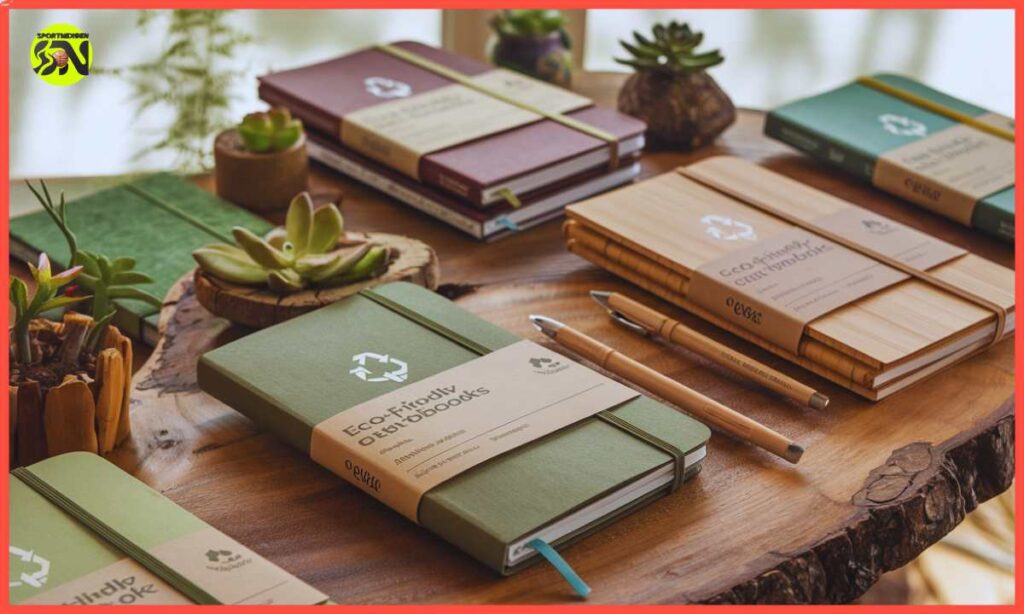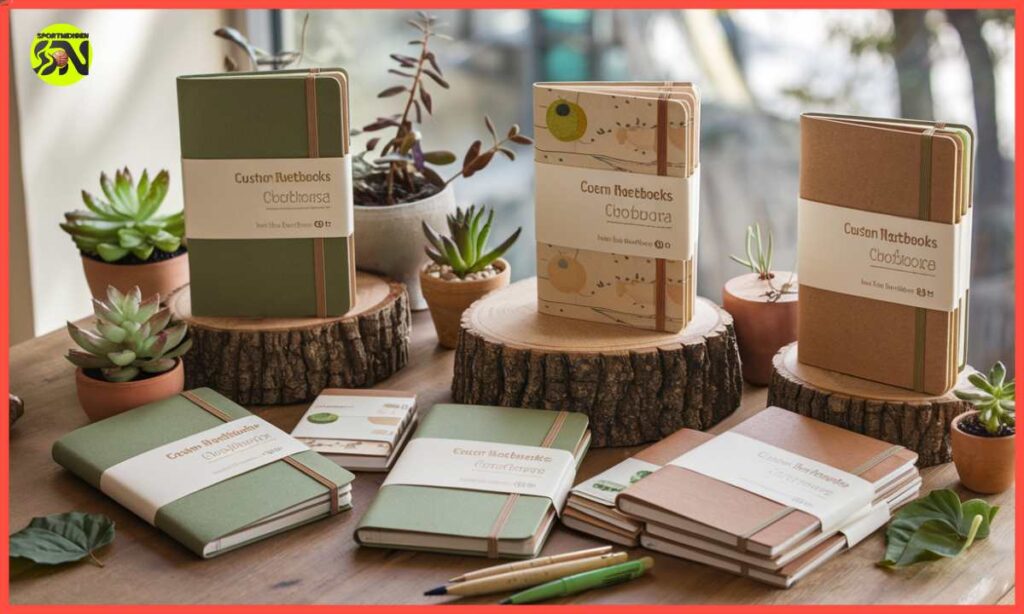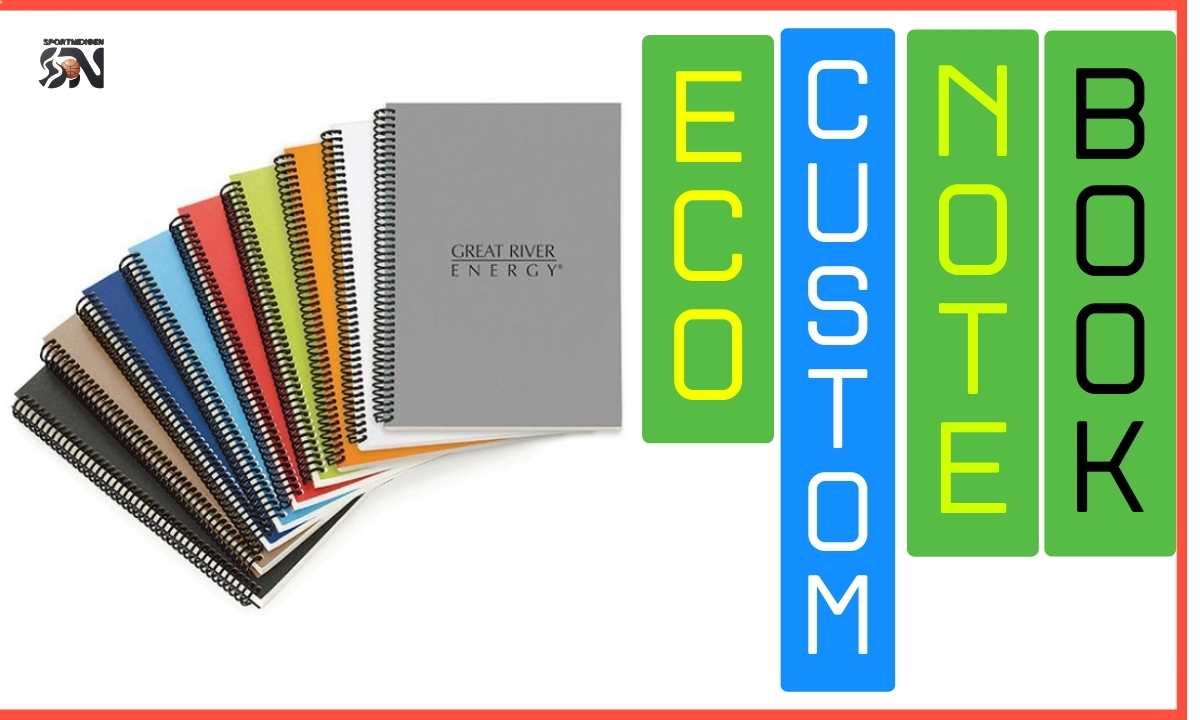In today’s world, sustainability is more important than ever. Every choice we make can impact the environment. Even small items like notebooks play a role in our ecological footprint. Eco-friendly custom notebooks are changing the game.
They offer a sustainable alternative to traditional stationery. These notebooks combine functionality with environmental responsibility. Let’s explore how eco-friendly custom notebooks are shaping a greener future.
Why Go Eco-Friendly?
Eco-Friendly Custom Notebooks reduce environmental impact by using sustainable materials and production methods. They help conserve forests, minimize waste, and lower carbon emissions. By choosing eco-friendly options, you contribute to a healthier planet and promote responsible consumption.
The Environmental Cost of Traditional Notebooks
Traditional notebooks come at a high environmental price. They often use virgin paper from newly cut trees. The production process involves harmful chemicals.
This leads to deforestation and pollution. Energy consumption in manufacturing is also high. Many notebooks end up in landfills, contributing to waste problems.
Benefits of Eco-Friendly Notebooks
Eco-friendly notebooks offer numerous advantages. They use recycled or sustainably sourced materials. This reduces deforestation and waste. Production methods are more energy-efficient. They often involve less harmful chemicals. By choosing Eco-Friendly Custom Notebooks, you reduce your carbon footprint. You also support sustainable practices in the stationery industry.
What Goes Into Eco-Friendly Notebooks?

Eco-Friendly Custom Notebooks typically use recycled paper, sustainably sourced materials like bamboo, and plant-based inks. Covers may be made from biodegradable materials or recycled plastics. Production processes focus on energy efficiency and reducing chemical use.
Sustainable Materials
Recycled paper is a common component in Eco-Friendly Custom Notebooks. It’s made from post-consumer waste. This process saves trees and reduces landfill contributions. Some notebooks use paper from sustainably managed forests.
These forests are certified by organizations like the Forest Stewardship Council (FSC). Bamboo is another sustainable material gaining popularity. It grows quickly and requires fewer resources.
Eco-Conscious Binding and Covers
Eco-Friendly Custom Notebooks often feature innovative binding methods. Some use biodegradable glues or stitching. Covers may be made from recycled cardboard or plant-based materials. Vegan-friendly options use alternatives to animal-derived products. Cork, recycled plastic, and even stone paper are emerging as sustainable cover materials.
Green Inks and Dyes
The printing process is also eco-conscious. Water-based inks are common in Eco-Friendly Custom Notebooks. These inks produce fewer volatile organic compounds (VOCs). Some manufacturers use vegetable-based inks. These are biodegradable and easier to remove during recycling. Natural dyes from plants are another sustainable option for coloring paper and covers.
Read This Blog:https://sportnexgen.info/t-king-xac-a8913-diagram/
How Customization Upgrades Sustainability
Customization allows for precise production, reducing waste from overproduction. Personalized designs increase the likelihood of long-term use, extending the notebook’s life. Eco-friendly printing techniques and sustainable customization options further enhance environmental benefits.
Personalized Designs Reduce Waste
Custom notebooks allow for precise production. Companies can order exactly what they need. This reduces overproduction and waste. Personalized designs also increase the likelihood of use. People are more likely to keep and use a notebook that reflects their style or brand.
Eco-Friendly Printing Techniques
Green printing techniques enhance the sustainability of custom notebooks. Digital printing reduces chemical use and waste. UV-cured inks are energy-efficient and produce less waste. Some printers use solar power or other renewable energy sources. These methods minimize the environmental impact of customization.
Sustainable Customization Options
Eco-friendly custom notebooks offer various sustainable options. Customers can choose recycled paper grades. Cover materials range from recycled leather to organic cotton. Customization extends to eco-friendly packaging options. Reusable or biodegradable packaging further reduces environmental impact.
Choosing the Right Eco-Friendly Custom Notebook

Select a notebook that meets your specific needs while prioritizing sustainability features. Look for certifications like FSC and consider factors such as recycled content and biodegradability. Compare different brands to find the best balance of quality, design, and environmental responsibility.
Assess Your Needs
Consider your specific requirements when selecting an eco-friendly notebook. Think about paper quality, size, and binding type. Determine if you need lined, blank, or dotted pages. Consider the notebook’s intended use and longevity. These factors will help you choose a sustainable option that meets your needs.
Look for Certifications
Certifications assure environmental standards. Look for FSC certification for responsibly sourced paper. Recycled content labels indicate post-consumer waste usage. Some notebooks carry carbon-neutral or biodegradable certifications. These labels help you make informed, eco-conscious choices.
Compare Brands and Products
Research different eco-friendly notebook brands. Compare their sustainability practices and materials. Look for transparency in their production processes. Read customer reviews to gauge quality and durability. Consider the overall environmental impact, including shipping and packaging.
Consider Reusability
Some Eco-Friendly Custom Notebooks are designed for multiple uses. Reusable notebooks with erasable pages reduce paper waste. Digital notebook alternatives offer a zero-waste option. Consider these innovative solutions for long-term sustainability.
Read This Blog:https://sportnexgen.info/yuxi-loog/
Frequently Asked Questions
What makes a notebook eco-friendly?
Eco-Friendly Custom Notebooks use sustainable materials and production methods. They often contain recycled paper, plant-based inks, and biodegradable components.
Are Eco-Friendly Custom Notebooks more expensive?
While some Eco-Friendly Custom Notebooks may cost more initially, they often offer better durability and quality. The environmental benefits justify the investment.
CanEco-Friendly Custom Notebooks be recycled?
Many eco-friendly notebooks are designed for easy recycling. Check the product details for recycling instructions.
Do Eco-Friendly Custom Notebooks compromise on quality?
No, eco-friendly notebooks often match or exceed the quality of traditional notebooks. Sustainable materials can provide excellent writing surfaces.
How do custom Eco-Friendly Custom Notebooks benefit businesses?
Custom eco-friendly notebooks showcase a company’s commitment to sustainability. They serve as effective, environmentally responsible promotional tools.
How do Eco-Friendly Custom Notebooks contribute to a circular economy?
Eco-friendly notebooks support circular economy principles by using recycled materials and being recyclable or biodegradable themselves. This reduces waste and promotes the reuse of resources.
Conclusion
Eco-Friendly Custom Notebooks represent a significant step towards sustainable stationery. They combine environmental responsibility with personalization and functionality. By choosing these notebooks, we reduce our carbon footprint and support innovative, green technologies. The customization options allow for unique, waste-reducing designs.
As consumers become more eco-conscious, these notebooks will play a crucial role in greener office supplies. Embracing eco-friendly custom notebooks is a small but impactful way to contribute to a more sustainable future. Let’s turn the page on traditional practices and write a new chapter in environmental stewardship.

Hayyat is a talented content writer and digital marketer with expertise in SEO, social media management, and online marketing. She excels at creating impactful, data-driven content to help businesses connect with their target audience and achieve measurable outcomes.





